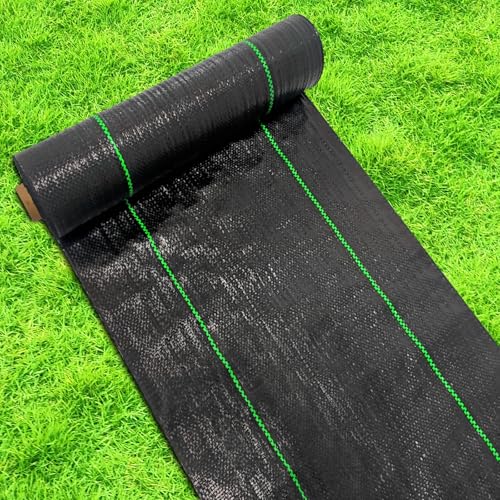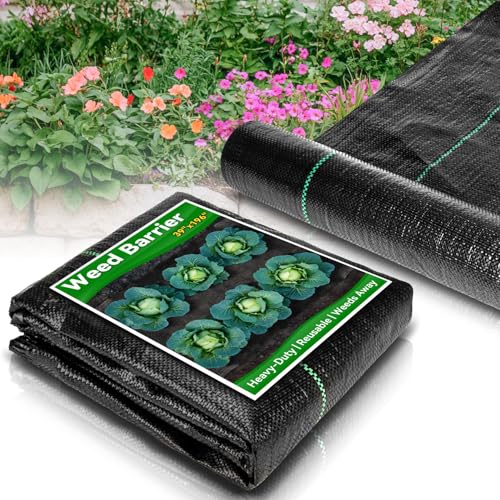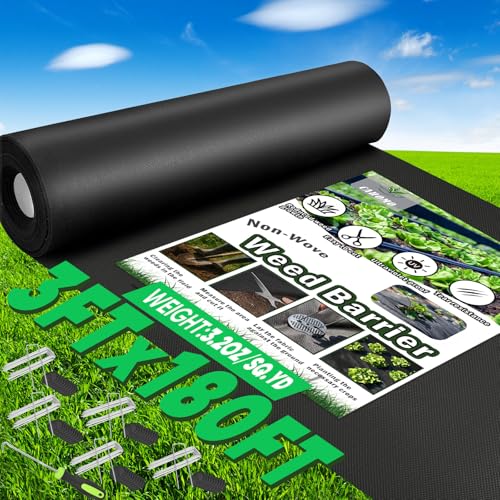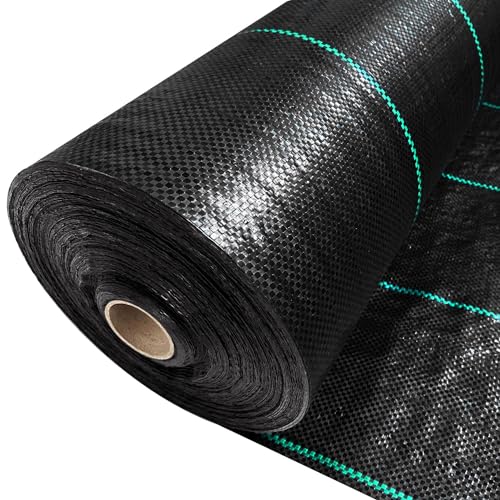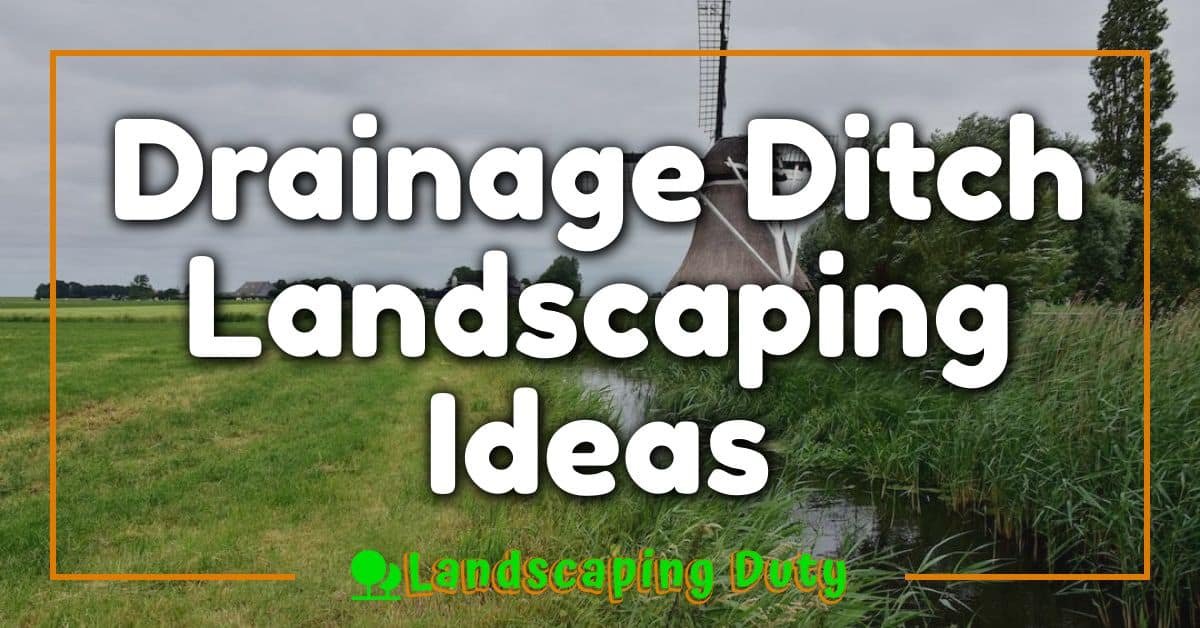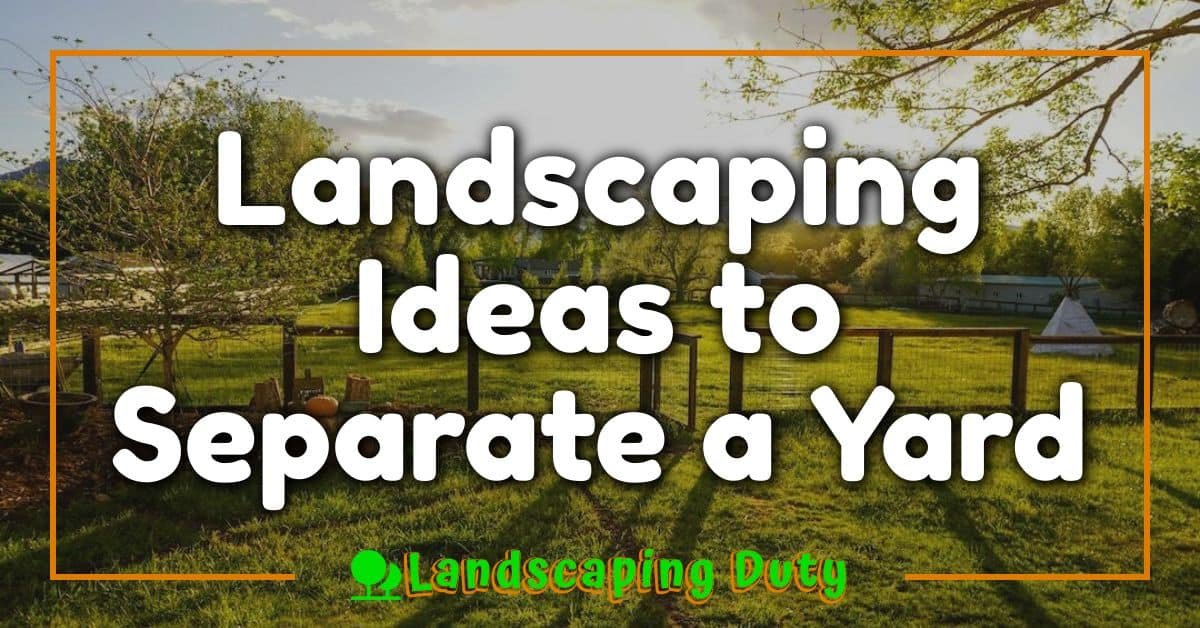If you’re a gardener or landscaper, you’ve likely heard of landscape fabric. It’s a material that’s often used to prevent weeds from growing in garden beds and landscaped areas. While it may seem like a good solution to keep your garden looking neat and tidy, there are several downsides to using landscape fabric that you should be aware of.

One of the main issues with landscape fabric is that it can actually harm your plants. While it may prevent weeds from growing, it also prevents water, air, and nutrients from reaching the soil. This can lead to compacted soil and poor plant growth. Additionally, landscape fabric can prevent earthworms from moving through the soil, which can also impact plant health.
Another downside to landscape fabric is that it can be difficult to install and maintain. If not installed properly, it can actually make weed growth worse by creating a barrier that traps weed seeds in the soil. Additionally, landscape fabric can break down over time, which can make it difficult to remove and replace.
Key Takeaways
- Landscape fabric can harm plant growth by preventing water, air, and nutrients from reaching the soil.
- Installing and maintaining landscape fabric can be difficult and may actually make weed growth worse.
- There are alternative solutions to landscape fabric that may be more effective and easier to use.
Understanding Landscape Fabric

https://www.youtube.com/watch?v=Ovq3oZi5O64&embed=true
If you’re looking for a low-maintenance way to keep weeds at bay in your garden or landscape, you may have come across landscape fabric. Landscape fabric is a type of barrier that is placed over soil to prevent weeds from growing. In this section, we’ll discuss the different types of landscape fabric and how it works.
Types of Landscape Fabric
There are two main types of landscape fabric: woven and spun. Woven landscape fabric is made by weaving thin strips of plastic together, while spun landscape fabric is made using polyester fibers. Both types of landscape fabric are somewhat porous, meaning they allow water and air to move through.
Woven landscape fabric is typically more durable and longer-lasting than spun landscape fabric, but it can be more expensive. Spun landscape fabric is less expensive, but it may not last as long and can be more prone to tearing.
How Landscape Fabric Works
Landscape fabric works by blocking sunlight from reaching the soil, which prevents weed seeds from germinating. It also helps to retain moisture in the soil by reducing evaporation, which can be beneficial in hot and dry climates.
To use landscape fabric, first, you’ll need to prepare the soil by removing any existing weeds and debris. Next, lay the fabric over the soil, making sure to overlap the edges by a few inches. Cut holes in the fabric where you want to plant your plants. Finally, cover the fabric with mulch or other hardscaping materials.
While landscape fabric can be an effective way to prevent weeds, it does have some downsides. For example, it can reduce soil aeration, which can be harmful to plants and earthworms. Additionally, landscape fabric can break down over time, which can lead to weeds growing through it. Finally, landscape fabric can be difficult to remove once it has been installed.
Overall, landscape fabric can be a useful tool in your gardening arsenal, but it’s important to weigh the pros and cons before deciding whether to use it.
Pros of Landscape Fabric

If you’re considering using landscape fabric in your garden, it’s important to know the pros and cons before making a decision. Here are a few pros of using landscape fabric:
Weed Control Efficiency
One of the biggest advantages of using landscape fabric is that it can help control weeds. When installed correctly, the fabric can prevent weeds from growing by blocking sunlight and preventing weed seeds from germinating. This means you’ll spend less time weeding and more time enjoying your garden.
Maintenance Reduction
Another benefit of using landscape fabric is that it can reduce maintenance. By preventing weeds from growing, you’ll spend less time pulling them out of your garden. Additionally, the fabric can help retain moisture in the soil, reducing the need for watering.
Overall, landscape fabric can be a useful tool in controlling weeds and reducing maintenance in your garden. However, it’s important to note that it’s not a foolproof solution and may have some disadvantages as well.
Cons of Landscape Fabric
https://www.youtube.com/watch?v=RhVcQ-uup-0&embed=true
Landscape fabric is a material that is commonly used to control weeds and help retain moisture in soil. However, there are several drawbacks to using landscape fabric that you should be aware of.
Soil Health Concerns
One of the main concerns with landscape fabric is that it can negatively impact soil health. Landscape fabric can prevent organic matter from breaking down and adding nutrients to the soil. This can lead to a decrease in soil fertility over time. Additionally, landscape fabric can prevent water from penetrating the soil, which can lead to waterlogging and root rot.
Environmental Impact
Another concern with landscape fabric is its environmental impact. Many landscape fabrics are made from petroleum-based products, which are not biodegradable and can take hundreds of years to break down. This can lead to long-term environmental harm. Additionally, landscape fabric can prevent beneficial insects and organisms from accessing the soil, which can disrupt the natural ecosystem.
Overall, while landscape fabric can be effective at controlling weeds and retaining moisture, it is important to consider the potential drawbacks before using it in your garden. If you do choose to use landscape fabric, be sure to select a high-quality, biodegradable product and use it sparingly to minimize its impact on soil health and the environment.
Impact on Plant Growth

If you use landscape fabric in your garden, it may have a negative impact on your plants’ growth. Here are a few ways landscape fabric can impact your plants:
« What Landscape of Messina is and Where to Find It What Are Landscaping Tools? A Beginner’s Guide »
Root Development
Landscape fabric can hinder root development by preventing roots from growing deep into the soil. The fabric can also prevent the roots from spreading out horizontally, which can cause the roots to become root-bound. This can lead to stunted or unhealthy plant growth.
Water and Nutrient Accessibility
Landscape fabric can also impact the accessibility of water and nutrients for your plants. The fabric can prevent water from penetrating the soil, which can cause the soil to become dry and compacted. This can make it difficult for plant roots to absorb water and nutrients from the soil. Additionally, the fabric can prevent essential nutrients from reaching the soil, which can lead to nutrient deficiencies in your plants.
Overall, if you want to promote healthy plant growth in your garden, it’s best to avoid using landscape fabric. Instead, consider using natural mulches like wood chips, leaves, or straw. These materials will break down over time and provide your plants with essential nutrients while also improving soil structure and water retention.
Alternative Solutions
https://www.youtube.com/watch?v=XNMctNTAhh4&embed=true
If you’re looking for an alternative to landscape fabric, there are several options available. Organic mulching options and inorganic materials are two popular choices.
Organic Mulching Options
Organic mulching options are a great alternative to landscape fabric. They are environmentally friendly and can help improve the health of your soil. Some popular organic mulching options include:
- Wood chips: Wood chips are a great option for mulching around trees and shrubs. They are easy to find and can be purchased in bulk from a local garden center or landscaping company.
- Compost: Compost is a great way to add nutrients to your soil while also suppressing weeds. You can make your own compost or purchase it from a local garden center.
- Pine needles: Pine needles are a great option for mulching around acid-loving plants like azaleas and blueberries. They are also a great option for suppressing weeds in vegetable gardens.
Inorganic Materials
If you’re looking for an inorganic alternative to landscape fabric, there are several options available. Inorganic materials are great because they don’t break down over time like organic materials. Some popular inorganic materials include:
- Rock: Rocks are a great option for mulching around trees and shrubs. They come in a variety of sizes and colors and can add a decorative element to your landscape.
- Gravel: Gravel is a great option for mulching around pathways and in areas where drainage is an issue. It comes in a variety of sizes and colors and can add a decorative element to your landscape.
- Plastic: Plastic mulch is a great option for suppressing weeds in vegetable gardens. It is easy to install and can be purchased in rolls from a local garden center or online. However, it is not environmentally friendly and can be difficult to dispose of properly.
Overall, there are many alternative solutions to landscape fabric. Whether you choose an organic mulching option or an inorganic material, it’s important to choose a material that is environmentally friendly and meets your specific landscaping needs.
Installation and Maintenance Tips

Proper Installation Techniques
When installing landscape fabric, it is important to follow proper installation techniques to ensure its effectiveness. First, make sure the soil is cleared of all weeds and debris before laying down the fabric. This will prevent any weeds from growing through the fabric and causing damage to your landscaping project.
Next, overlap the fabric by at least 2 to 4 inches to ensure that the ground stays covered. This will prevent any soil from getting through the gaps and causing weeds to grow. Use pins to secure the fabric in place and prevent it from shifting or moving around.
When planting new plants, make sure to cut a hole in the fabric and plant directly into the soil. This will allow the plants to grow properly without any interference from the fabric.
Long-Term Care and Replacement
While landscape fabric can be a great asset to your landscaping project, it does require long-term care and replacement. Over time, the fabric can become clogged with dirt and debris, which can prevent water from reaching the soil and plants.
To maintain the effectiveness of the fabric, you should regularly check it for any signs of damage or wear. If you notice any tears or holes in the fabric, replace it immediately to prevent any weeds from growing through.
Additionally, you should regularly water your plants to ensure that the fabric does not dry out and become brittle. This will prevent any damage to the fabric and ensure that it lasts for as long as possible.
In summary, proper installation techniques and long-term care and replacement are crucial for the effectiveness of landscape fabric. By following these tips, you can ensure that your landscaping project stays weed-free and beautiful for years to come.
Real-Life Applications
https://www.youtube.com/watch?v=7SxrhLzXYEc&embed=true
Residential Landscaping
If you are a homeowner looking for a low-maintenance solution for your garden beds, landscape fabric may seem like a great option. It promises to suppress weeds, retain moisture and provide a barrier against pests. However, the reality is that landscape fabric can do more harm than good.
Firstly, landscape fabric can be difficult to install. It requires a lot of prep work, such as removing existing weeds and debris, and cutting the fabric to size. If not installed properly, the fabric can bunch up and create air pockets, which can actually encourage weed growth.
Secondly, landscape fabric can hinder the growth of your plants. While it may retain moisture, it also prevents air and nutrients from reaching the soil. This can lead to stunted growth and even death of your flowers and vegetables.
Lastly, landscape fabric can be unsightly. Over time, it can become exposed and torn, and it can even start to peek out from under your mulch.
Commercial Uses
Landscape fabric is often used by landscaping professionals for large-scale projects, such as parks and commercial properties. However, the disadvantages of landscape fabric still apply.
For example, landscape fabric can be expensive and time-consuming to install on a large scale. It requires a lot of manpower and can take days or even weeks to complete.
Additionally, landscape fabric can be a liability for commercial properties. If the fabric becomes exposed or torn, it can be a tripping hazard for guests and employees.
Lastly, landscape fabric can harm the environment. It is made from non-biodegradable materials, which means it will not break down over time. This can lead to soil contamination and harm to wildlife.
Overall, while landscape fabric may seem like a quick and easy solution for your landscaping needs, it is important to consider the long-term consequences. There are many alternatives to landscape fabric, such as organic mulch and ground covers, that can provide the same benefits without the negative side effects.
Final Considerations

Weighing the Advantages and Disadvantages
After considering the advantages and disadvantages of landscape fabric, it’s important to weigh your options before making a decision. While landscape fabric can help prevent weeds and reduce the need for toxic weed killers, it can also prevent air and water from reaching the roots of your plants.
Additionally, landscape fabric is not a permanent solution and can become damaged over time. Cheaper fabrics may degrade in the soil or get pulled up when removing weeds, while more expensive fabrics can still allow weeds to grow through the material over time.
Another factor to consider is the cost of landscape fabric. While it may seem like a cost-effective solution in the short term, it may not be worth the investment in the long term if it needs to be replaced frequently.
Making an Informed Decision
When it comes to deciding whether or not to use landscape fabric in your garden, it’s important to consider your individual needs and preferences. If you’re looking for a low-maintenance option to prevent weeds, landscape fabric may be a good choice for you.
However, if you prioritize healthy soil and want to promote the growth of your plants, it may be best to avoid using landscape fabric. Instead, consider using organic mulch or other natural methods to prevent weeds and promote healthy soil.
Ultimately, the bottom line is that landscape fabric is not a one-size-fits-all solution. It has both advantages and disadvantages, and it’s up to you to decide whether or not it’s the right choice for your garden. Consider the cost, environmental impact, and overall health of your plants before making a decision.
Frequently Asked Questions

What are some effective alternatives to using landscape fabric?
Yes, there are several alternatives to using landscape fabric. One option is to use a thick layer of mulch to suppress weeds. You can also use cardboard or newspaper as a barrier to prevent weeds from growing. Another option is to use organic weed control methods, such as hand weeding or using a hoe.
Does landscape fabric allow for proper water drainage?
While landscape fabric is designed to allow water to pass through it, it can still impede water drainage if it becomes clogged with soil and debris. This can lead to water pooling on the surface and potentially damaging your plants. Additionally, landscape fabric can prevent beneficial microorganisms from reaching your soil, which can negatively impact plant growth.
What are the primary benefits and drawbacks of using landscape fabric beneath gravel?
Using landscape fabric beneath gravel can help to prevent weeds from growing, which can save you time and effort in the long run. However, if the fabric becomes clogged with soil and debris, it can impede water drainage and lead to water pooling on the surface. Additionally, landscape fabric can prevent beneficial microorganisms from reaching your soil, which can negatively impact plant growth.
Can landscape fabric be considered safe and free from harmful chemicals?
Landscape fabric is typically made from polypropylene, which is considered safe for use in gardens. However, some types of landscape fabric may contain harmful chemicals, such as dyes or flame retardants. It is important to read the label carefully and choose a product that is free from harmful chemicals.
How long does it typically take for landscape fabric to decompose?
Landscape fabric is designed to be durable and long-lasting, which means that it can take several years to decompose. The exact amount of time it takes for landscape fabric to decompose will depend on a variety of factors, including the type of fabric, the thickness of the fabric, and the environmental conditions in your area.
What is the recommended method for removing landscape fabric?
To remove landscape fabric, start by pulling up any plants or mulch that are covering the fabric. Next, use a pair of scissors or a utility knife to cut the fabric into manageable sections. Finally, pull up the fabric and dispose of it in the trash. Be sure to wear gloves and protective clothing to avoid coming into contact with any soil or debris that may be on the fabric.

